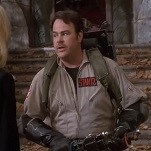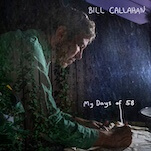For those who don’t know one of the 3.1 million people who were foreclosed on in the U.S. last year, the face of the subprime lending crisis may be limited to an incoherent interview on the news, or even just a dot on a rapidly filling map online. But before they were buyers, they were happy homeowners, many of them for the first time. Salon.com writer Mary Elizabeth Williams describes their roller coaster in sometimes excruciating detail in her first book, Gimme Shelter.
A longtime resident of San Francisco, Williams became even more fiercely attached to New York after September 11, even as some of her friends scattered across the country. But her fantasies of owning an apartment when she found out she was pregnant with her second daughter soon turned into nightmares of unstaged homes and well-shod fellow bidders with seemingly limitless incomes. Once dreaming of buying a multi-family house with rental potential in her diverse Brooklyn neighborhood, Williams and her husband are forced to stretch their budget again and again, enduring the scorn of friends who were able to buy before the boom and the flight of others who have given up on the New York City real-estate dream.
In spite of Williams’ occasional interviews with friends and acquaintances buying property outside the tri-state area, Gimme Shelter is a largely (some might say exquisitely) myopic book, whose fussy differentiation among neighborhoods has the potential to bore non-New Yorkers. Those friends and acquaintances are often the objects of envy for Williams and her husband, although she seems all too ready to report on their misfortunes in an epilogue about the bursting of the housing bubble. Passages which purport to explain no-docs or ARMs in a few pages without any examples of home-buyers who used them aren’t just ineffectual; sometimes it seems like Williams resents that her family didn’t take up the more sketchily defined financing offers which were offered to them throughout their journey, even though she knows how well they worked out for buyers who accepted that help.
Still, Williams’ unabashed exploration of “house lust” as it infected her for nearly three years, a fever consuming job changes and family arguments in its wake, may provide some other generation with an emotional road map to the subprime mortgage mess. The drive to own is made up of more than legislation and a dishonest selling job; the prickly feeling Williams describes when seeing other people’s happy homes can be a powerful engine.







































